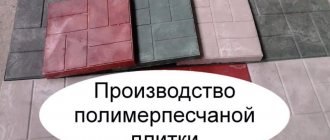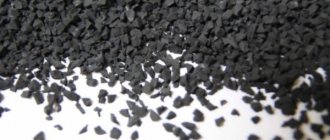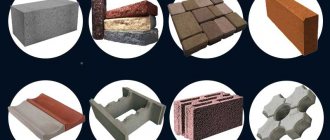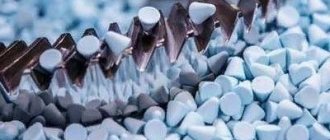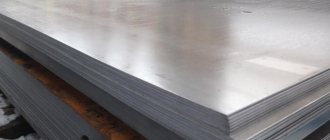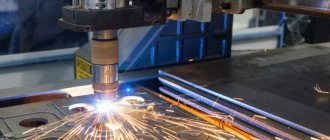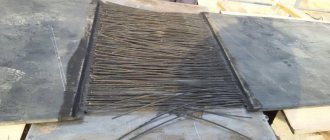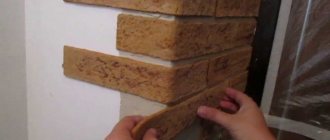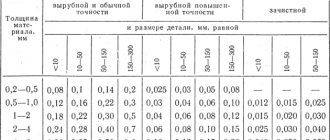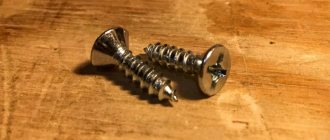Man has always strived to decorate his home and make it practical. For these purposes, he uses various materials, many of which have remained relevant for thousands of years. Thus, the first prototypes of ceramic tiles were found in excavations of the Euphrates and Tigris Mesopotamia. In ancient times, this material was used to decorate the walls of temples and houses of the nobility. Over time, its popularity grew, and manufacturing methods improved. Let's take a closer look at modern ceramic tile production technology and find out how it has earned such an impeccable reputation.
Compound
First of all, let's figure out what ceramic tiles are made of. The main raw materials used in the production of ceramics are represented by the following materials:
- Clay materials. They give the wet mass the plasticity necessary for molding blanks.
- Quartz materials (mainly sand). They perform a structural function, that is, they create the “skeleton” of the product. They allow you to limit and control changes in the dimensions of the product, which inevitably accompanies the firing process.
- Materials containing feldspars (aluminosilicates or carbonates of potassium, sodium, calcium, etc.). With their help, when the product is fired, its structure remains dense and glassy.
The process of making ceramic tiles consists of the following stages:
- Mixing materials.
- Molding.
- Drying.
- Applying glaze.
- Burning.
- Sorting.
Let's look at each stage separately.
How does the tile formation process take place?
The manufacturing technology of ceramic tiles implies that they are formed by dry pressing. In this case, the prepared powder, which contains all the necessary components, enters the shaped press. It allows the material to be compressed as much as possible, after which the finished plates are ejected at the bottom of the plunger. Such presses typically provide pressures that exceed 2,500 tons.
To obtain very thin tile material, it is necessary to additionally use wetting agents. The combination of extrusion with stamping allows you to obtain products of irregular shape, which are distinguished by quality and low cost. This can be done by processing the raw material in a special cylinder with high pressure, after which it is squeezed out in small portions. Subsequently, the prepared samples are stamped using hydraulic or pneumatic presses.
There is also another method for forming tiles. It means that prepared portions of raw materials are compressed using a hydraulic press between two halves of a rigid mold. The resulting samples are released using air injection and vacuum.
Mixing materials
It all starts with the extraction of materials, but we will not consider it, since we are interested in the process of making ceramic tiles. First of all, the clay is mixed with the other components according to strictly calculated proportions. The finished mixture is sent to preliminary grinding, where it is crushed and moistened.
The method of preparing ceramic mass depends on the properties of the raw materials and the desired product. There are such ways:
- Semi-dry. The components are first crushed, then slightly dried, crushed, mixed and sent for molding. This method is called semi-dry because the components themselves have a certain degree of moisture.
- Plastic. The clay is crushed and sent to a mixer, where it is mixed with additives and takes the form of a homogeneous plastic mass.
- Wet. The materials are crushed and mixed with the addition of water (up to 60%). A homogeneous liquid mixture is supplied to special tanks.
Regardless of which ceramic tile production line is used, all materials must be thoroughly ground and mixed to produce a good product.
Preparation of raw materials
The production of ceramic tiles is impossible without careful preparation of raw materials. It must be sorted by size and type. After this, the raw materials are crushed to the desired fraction using an angle crusher or other equipment. During the preparation process, it can be crushed several times to obtain high-quality material.
When all the raw materials have acquired the desired grain size, the individual components are mixed together. In this case, it is very important to choose the optimal proportions between the ingredients used. The basic properties of the future tile and its appearance depend on this.
Ball mill
To obtain a more homogeneous mass, water is added to it and processed in a ball mill. The result is a special liquid mixture called a suspension. Subsequently, water is removed from it using a special filter press. It can remove 50% of moisture. Subsequently, the resulting mass is again subjected to grinding, but in dry form.
Also, during the tile manufacturing process, the resulting suspension can be pumped into a special sprayer. It usually consists of a rotating disk or nozzle. In the sprayer, the suspension is freed from excess moisture due to the intense movement of air flows. Also, raw materials can be crushed by dry grinding with granulation. There are special granulating machines for this purpose.
Molding
Molding is done in two ways: pressing and extrusion. In the first case, special presses compress the powdery mass in two directions. Being under high pressure, the granules undergo compaction and partial deformation. Due to this, the tile acquires the appropriate density and strength.
When using the extrusion method, the tiles are made from a dough-like mass, which is formed by pressing through the holes of the extruder. This method differs from dry pressing in the presence of a liquid phase in the production process. It is precisely because the viscous mass is squeezed out of the apparatus and cut that it is possible to produce products of different shapes. Ceramic tiles made using the extrusion method can be convex or concave. When pressing, you can only vary the size of the products.
Types of ceramic tiles
Ceramic tiles are classified according to several criteria:
- raw materials: cotto, porcelain stoneware, clinker, broom;
- production technology: amount of firing, surface glazing;
- molding method: manually, casting, pressing, extrusion;
- type of texture: porosity, presence of mosaics, stone inserts, artificial aging effect;
- purpose: for kitchen and floor, bathroom, swimming pool, fireplace.
Several types of tiles can be produced at once. Products should be made more attractive to buyers by applying unique designs, using high-quality templates and molds.
You also need to choose the size of the products. The most popular (in cm): 20x20, 20x30, 20x40, 33x33, 40x40.
Drying
An obligatory stage in the production technology of ceramic tiles is drying. At this stage, moisture is removed from the finished molds, which was necessary for comfortable molding. Drying conditions play a vital role in ensuring the integrity and strength of the future product, so they are strictly controlled. Modern tile production plants use drying units that blast the raw material (molded wet product) with hot air. Heating leads to the formation of moisture on the surface of the semi-finished product, which quickly evaporates and is removed by the ventilation system.
Good heat transfer, efficient ventilation and high air temperature ensure the installation's performance. If the raw material is fired without going through the drying stage, it will crack. At the final stages of drying and during the firing process, the tile shrinks, that is, a proportional decrease in its linear dimensions. This explains the need for calibration of finished products. The higher the level of the enterprise, the more likely it is that its products will have the same dimensions. Therefore, it is better to choose options in the middle price range (for example, from Euroceramics, Sokol, etc.) than to get an uneven wall.
Production technology
The technological process for the production of ceramic tiles consists of the following stages:
1. Preparation of the mixture
There are two technologies for preparing the mixture: wet and dry. In wet technology, raw ingredients are crushed and mixed in drum crushers in the presence of water. A crusher is a huge drum rotating around its axis: grinding parts (stones or balls) grind the mixture. As a result of grinding, an aqueous suspension is obtained, it is called slip.
Preparation of slip from three phases:
- Grinding of feldspar and sand (takes from 10 to 12 hours);
- Adding clay;
- Adding kaolin;
The finished slip is poured into containers and aged.
With dry technology, raw ingredients are crushed in hammer crushers and then moistened in special machines. Wet technology is more expensive, but gives much better results.
2. Product molding
Molding is divided into three groups: A, B, C.
Forming A is a plastic forming method. A plastic clay mass with a moisture content of 15-25% is formed by extruding timber. The ceramic mass is first compressed by the auger of the belt press, and then pressed through a replaceable mouthpiece, which is attached to the end of the outlet part of the press. Passing through this mouthpiece, the plastic clay bar takes the shape of a tile with a given thickness and width. The cutting device cuts the molded timber coming out of the press mouthpiece into pieces along the length of the tile. The molded tiles come out of the press in double tiles; they are separated after firing. This production method produces extruded tiles.
Molding B – hard molding method (dry pressing). Tiles, consisting of a thoroughly mixed dispersed mass, are molded in a press under high pressure. The metal consumption of this method is three times higher than that of the plastic method. The duration of the production cycle is reduced by 2 times, products have a more regular shape and more accurate dimensions.
This method is also divided internally into dry and semi-dry methods.
Dry: Press powder is prepared with a moisture content of 2-6%. This method is used to make tiles such as gres and porcelain stoneware.
Molding C is a slip method in which products are made from a multicomponent mass consisting of heterogeneous and difficult-to-sinter clays and additives. Casting occurs with a water content of up to 40%. This technology is used for the manufacture of non-standard ceramic elements. It has not received widespread use.
3. Drying
To avoid shrinkage, cracking and distortion during firing, the tiles should be dried to a moisture content of 5-6%. Currently, drying is carried out artificially in continuous tunnel dryers or periodic chamber dryers for 2 to 72 hours, depending on the properties and moisture content of the raw materials. Drying temperature 120-150°C.
4. Preparation of glaze and glazing
Glaze is a glossy alloy that melts on a clay shard in a layer 0.12 - 0.40 mm thick. Glaze is applied to cover the shard of the product with a dense and smooth layer, as well as to give the product with a dense shard increased strength and attractive appearance, to guarantee dielectric properties and protect the decor from mechanical and chemical influences.
Preparation of glaze - grinding the mixture in mills with the addition of water.
According to the chemical composition of glazes there are:
- Lead - have limited use due to their toxicity; have a rich color spectrum;
- Tin - have limited use due to high cost;
- Contains boron – boron gives elasticity to the glaze, increases the brightness of the glaze;
- Alkaline glazes - affect metal oxides, resulting in clear and pure tones;
- Zinc - with a low content of zinc gives the glaze brightness, with a high content - dullness.
There are also transparent and opaque glazes. Transparent glazes are used to cover tiles made of white-burning clay; they preserve and enhance the color of the ceramic shard. Opaque glazes are used to mask unwanted coloration.
The glaze is applied in 2 ways: dry and wet.
Wet method: glaze is an aqueous suspension of finely ground ingredients.
Dry method: The glaze is a type of granule.
5. Firing
After applying the glaze, the product is sent to the oven for firing. The oven is equipped with a pre-drying module, dust removal and blowing chambers. Heat treatment is carried out at a temperature of 1230 degrees, the length of the furnace is about 89 meters. Firing of products in the kiln takes place throughout the day.
- Single (one-time) firing: After drying the product, a glaze is applied and fired at a temperature of about 1230°C simultaneously with the firing of the tiles. Disadvantage: during the firing process, gas from the decomposition of the mixture penetrates through the glaze, which leads to the formation of small marks in the shape of pin ends and cracks on the surface of the tile.
A variation of this firing method is the pressure glazing method of tiles. Glazing occurs simultaneously with the preparation of the mixture. The powdery layer of glaze is pressed together with the mixture and then fired. The resulting tile has low porosity and increased strength due to the large thickness of the glaze.
There is also a method of applying a granular glaze mixture to the hot body of the tile. The tiles are made by pressing a regular mixture and firing without glaze. Through a hole in the kiln, glaze in the form of granules is applied to the already fired and still hot tile. The tile is fired until the glaze is completely fired. This method produces particularly durable tiles for high traffic areas.
- Double (double) firing: First, the tile shard is fired at a higher temperature, then the glaze is applied and fired a second time. This firing has the disadvantage of higher cost, as well as lower strength of the tiles. Its advantage is that during the firing process, small marks in the form of pin ends or cracks do not appear on the surface of the tile.
- Three-fold firing - the tile is decorated on a glazed surface, followed by firing (a fourth and fifth firing is possible) at a low temperature. Advantages: color variety and the ability to use precious metals. Basically, three-time firing is used to produce expensive tiles of high artistic value.
6. Quality control, sorting, packaging.
Applying glaze
Glaze (enamel) is a glassy coating that is applied to the front side of the tile and fixed during the firing process. Glazing is performed for the purpose of decorating and strengthening the product. The composition of the glaze may include various materials and compounds (sand, oxides, frits, coloring pigments, etc.). It can be glossy and matte, colored and monochrome, and sometimes even transparent. Coloring is achieved by adding metal oxides and salts (iron-red, chromium - green, cobalt - blue, etc.). The enamel has a glassy structure and differs from the ceramic base not only in appearance, but also in characteristics, the most important of which is water resistance.
Today, a ceramic tile production plant can use several dozen methods of applying glazes to its products. The enamel can be used in the form of a sprayed suspension, paste or granules. In the basic version, it is applied to molded blanks using a large round drum, which, making one circle, processes several tiles at once. Application can be done before or after firing, and in some cases, even during firing.
In order for the product to have a more aesthetic appearance, the enameling process can be accompanied by the application of an image. Ceramic tiles with a pattern are much more popular than plain ones. So that each tile has a unique image, but maintains the style of the series, the drum is simply shifted along the axis of rotation. Of course, this applies to models with abstract pictures.
Differences in production methods
All starting materials are first thoroughly crushed, after which they are stirred and moistened until a homogeneous mass is formed. The next stage is molding, for which pressing or extrusion can be used. Pressed tiles are made from raw materials crushed into powder. First, the powder is compacted and then pressed under high pressure. This method makes it possible to more strictly adhere to the standard size of products and form a high-quality surface.
In the production of ceramic tiles, extrusion technology involves passing a paste-like mixture of base materials through a special die of the desired shape. In the process of passing the prepared mixture through the mold, products of the required width and thickness are created. The use of this molding method is simple and less expensive compared to the pressing method. After this action, the ceramic tiles are dried and fired.
Burning
Ceramic tiles are fired to make them sufficiently hard and durable. This occurs due to chemical and physical changes in the composition of the material and glaze, which occur under the influence of high temperatures. Typically, ceramic tile manufacturers use continuous kilns for this purpose. In essence, such a furnace is a tunnel, moving through which with the help of a special conveyor, the tiles are first preheated (allowing you to get rid of residual moisture) and then fired.
A characteristic property of clay is its ability to transform into a durable stone-like mass when fired. Depending on the type of product, the firing temperature ranges from 900 to 1300°C. After spending a certain time in the oven, the tiles are consistently cooled to a temperature at which, without compromising quality, it can be unloaded from the oven.
Necessary materials and equipment
To make ceramic tiles you will need the following materials:
- to maintain dimensions after drying, quartz sand is added to the product;
- to obtain the required viscosity of the sweep, a feldspathic and carbonate composition is required;
- an elastic mixture is obtained through the use of refractory or refractory clay;
The following additives are used in the tile production process:
- Glaze is needed to improve the aesthetic characteristics of the product. Glazing the tile is also necessary to protect it.
- To increase plasticity and reduce shrinkage of the material, releasing additives are used.
- In order to reduce the melting point of clay, fluxes are added.
- The addition of engobe is needed for decorative processing of ceramic products.
- To increase the porosity of the material, vapor-forming components are added.
The technology for manufacturing ceramic tiles at the factory involves the use of the following equipment:
- A vibrating machine is used to compact the prepared concrete mixture.
- A concrete mixer is used to prepare the clay mass and mix all the ingredients.
- The mold is needed to fill the mass and form a geometric product.
- The glaze is sprayed and the design is applied in special chambers.
- Drying of the formed products is carried out in an oven.
- A set of stencils for professional drawing.
Attention! Some factories use multifunctional chambers in which designs and glazes are sprayed onto elements. Although this equipment is quite expensive, it quickly pays for itself.
Sorting
Before entering the packaging line and warehouse, the finished tiles are carefully sorted. This procedure solves three problems:
- Reject products with defects.
- Separate tiles of the first grade from tiles of lower grades.
- Group trade lots by variety and color.
Typically, manufacturers of ceramic tiles perform sorting in the following way: after leaving the kiln, it goes through three sections: flaw detection, calibration, and visual inspection. To identify defects, each product is fed onto rails and rolled with a roller. Due to the fact that the rails are located at the edges of the tile, and the roller presses into the center, defective samples break, unable to withstand the load. Painting defects are checked visually, along with determining the tone. All that remains is to sort the products into batches and send them to the warehouse.
As you can see, the technology for producing ceramic tiles is quite simple. However, in order to obtain a high-quality product, it is necessary to approach each stage with full responsibility and compliance with all technological rules. This is why many novice entrepreneurs who have opened a factory for the production of ceramic tiles cannot achieve the proper quality of their products. Now let’s briefly find out what properties ceramic tiles should have.
Wear resistance
Of course, this is one of the most important qualities of floor tiles, as it characterizes its resistance to abrasion and the ability to maintain an attractive appearance after long-term use. Despite the fact that the material as a whole is quite durable, its type should be selected depending on the operating conditions. Thus, designed for a simple bathroom, ceramic floor tiles with a pattern placed in a public toilet will quickly wear out and lose their appearance.
Water absorption
Water absorption is the ratio of the mass of water absorbed by the tile when it is completely immersed under water to the mass of the dry product, expressed as a percentage. For glazed floor tiles it should not be higher than 3%. For wall marks this figure increases to 10%. In this regard, for lining swimming pools, for example, not just any tile is suitable. Large manufacturers, for example, the Shakhtinskaya Ceramic Tile enterprise, can produce at their facilities different types of specialized products, from bath tiles to ceramics for swimming pools.
The process of covering surfaces with ceramic tiles
The process of covering surfaces with ceramic tiles also has its own characteristics. The basis for creating the adhesive that is used for ceramic tiles is a mixture of cement and gypsum in various proportions; the process can be seen in the video. Polymer additives are added to the main mixture, which can slow down or speed up the hardening process of the solution, as well as reduce the porosity of the substance and increase its resistance to low temperatures.
There are solutions that are used for lining pools, bathtubs and tanks - they are resistant to moisture.
Other solutions are used for surfaces located on the street that are constantly exposed to intense load - terraces, sidewalks, plinths, balconies and others. Laying tiles for stairs and porch surfaces requires special technology - such surfaces should not slip, they must be moisture-resistant and very durable in order to withstand intense loads.
Frost resistance
Just like water absorption, this property depends on the porosity of the product. Regardless of the production technology, ceramic tiles still have pores into which moisture can penetrate. As you know, when water freezes, it increases in volume. The ability of tiles saturated with moisture to withstand frequent alternating freezing is called frost resistance. This indicator is important when choosing exterior finishing materials. The fewer pores in ceramics, the lower its water absorption rate, and the higher its frost resistance rate.
Chemical resistance
This is the name given to the characteristics of tile enamel, reflecting its ability to withstand contact with chemicals (acids, bases, household chemicals, additives for disinfecting water in swimming pools, etc.). The tile should not undergo external changes under the aggressive influence of these substances. By the way, when considering the resistance of ceramics to certain influences, we should not forget that the seams between the tiles can also be subject to destructive effects. To avoid this, they are coated with protective compounds.
